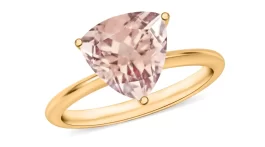What is a Jewelry Appraisal?
Every year, customers flood my inbox with questions about jewelry appraisal. An appraisal is a professional estimate of the value for a piece of jewelry. It can be used to help insure a piece, to sell it, or to use when securing a loan. To help shed some light on the topic, I spoke with some outside experts about the basics of jewelry valuation.

This information isn’t financial or insurance advice. These experts lend their opinions based on their years of expertise in the industry. Think of it as a conversation starter for speaking with your personal finance or insurance expert when considering your jewelry collection.
And most importantly, these experts aren’t endorsing Shop LC. They share their wisdom because, like us, they are passionate about gemstones and jewelry and want to help you make informed decisions when collecting!
When researching jewelry appraisal, I spoke with John Smith and Paul Haywood.
John is a goldsmith with over 20 years of industry experience. John writes for Jewelry FAQs, answering many common questions collectors and connoisseurs might have concerning their collections.
Paul of Haywood’s Jewellery also provided insightful commentary. Paul is an FGA DGA and gemologist.
How to Get Jewelry Appraised
Even before your jewelry appraisal, it’s essential to identify why you want an estimate. Do you want to insure it? Planning to sell? Just for your peace of mind? The reasoning can help guide the overall process.
Paul: Before contacting an appraiser, it can be helpful to know the reason why
you want your jewelry appraised as there are generally three main reasons:
- Insurance – this is the value for your item to be replaced should it be lost or stolen
- Probate is the “fair market value” the piece is estimated to sell for should it be sold at public auction and used for estate settlements.
- Collateral is the lowest possible value of the piece, usually the value of its parts (metal, stones, etc.) to be used as collateral against a loan.
Identify Your Jewelry
Your first step is identifying your collection. Only some pieces may require an appraisal. Generally, a jewelry valuation is for the most critical jewels in your collection. These can be heirlooms or sentimental pieces like an engagement ring.
John: The first step in appraising your jewelry is to identify the type of jewelry you have, including rings, earrings, necklaces, bracelets, or other types of jewelry. Knowing the kind of jewelry you have will help you determine the best approach for appraising it.
Gather Information
Once you arrange your collection, you want to gather information on it. Your Shop LC order history can be helpful, along with receipts or other identifying information on your purchases. This helps establish the provenance or the history of your collection. As pieces change hands, the paper trail can help tell the story of your collection while recording key details like changes in value over time.
John: The next step is to gather information about your jewelry. This may include the metal and gemstone types, the weight and dimensions, and identifying marks or stamps. This information will be helpful when evaluating your jewelry.
Research the Market Value of Similar Jewelry
Next, you will want to research the value of similar pieces. It’s a good time also to see the difference between buying with Shop LC! When the traditional retail markup is between 100 to 300 percent, it’s easy to see how much you save. As always, Shop LC backs this with the Lowest Price Guarantee.
John: The third step is researching similar jewelry’s market value. This can help you determine a rough estimate of the value of your jewelry. You can use websites, jewelry databases, or jewelry guides to find comparable pieces and their market values.
Consult with a Professional Appraiser
Once you’ve assembled your collection and gathered your info and research, you want to speak with a professional appraiser. They should be a neutral party with no personal interest or stake in your jewelry collection. Your appraiser should be part of a professionally recognized organization that you can evaluate and trust.
John: The fourth step is to consult with a professional appraiser. A professional appraiser can provide a more accurate and detailed appraisal of your jewelry based on their expertise and knowledge of the market. You can find a professional appraiser through the International Society of Appraisers or the American Society of Appraisers.
Paul: To get your jewelry appraised correctly, you should take it to a trained professional. And while many jewelry stores claim to offer this service, only some are qualified to do so. This is because appraising jewelry requires specialist skills.
Paul: When looking for an appraiser, you want to check that they are a qualified gemologist. A GIA Graduate Gemologist (GG) or a graduate of the Gem-A’s Gemology and Diamond Diplomas are good examples. You also want to check that they are members of a recognized association for appraisers. For example, the GIA has a list of ones you can check out. Members of the associations often only carry out appraisals and keep up to date with their training and knowledge to provide accurate assessments.
Paul: One final piece of advice would be to check that they charge a flat fee for an appraisal, not a percentage of the value of the pieces, as this removes the incentive to overvalue.
Next Steps
After a professional appraisal, it’s time to decide what to do. For example, consult your insurance provider if you are insuring your jewelry collection. Most homeowner insurance policies only cover you up to a certain amount. After that, you might need a different policy or amendment to your existing one. And don’t forget to safeguard your jewelry collection at home.
Start your collection with certified gemstones from Shop LC!





No Comment